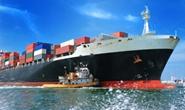Prices

August 17, 2014
Tide of Steel Overwhelming Port of Houston
Written by Sandy Williams
The Port of Houston warehouses are overflowing with steel. Steel Market Update spoke with a warehouse manager in the area who said “stevedore warehouses and various public warehouse facilities are brimming with materials, both inside and outside storage.”
Some warehouses have had to turn away longstanding import customers for inside storage material such as steel coil, specialty metals and other weather sensitive steel products. The congestion is highest in Houston but increased tonnage has also been seen in Savannah and other ports due to “new business coupled with increases in tonnage from existing customers.”
The Port of Houston Authority reports that steel imports from June to July 2014 increased 43 percent, from 573,745 tons to 820,547 tons (up 87.8 percent from July 2013). In the first half of 2014, 2,664,385 net tons of steel imports passed through the Port of Houston, a year-over-year increase of 27.4 percent.
“One of the major contributing factors to the bulge in warehouse storage is the lack of available trucking to move materials out to the end user or processor before new shipments arrive. Transport companies, when they offer equipment, are demanding premium pricing, as shippers try to develop new carriers to move their materials out of Houston or off the ports. One example of this is we have seen transportation rates climb 30 percent in the lane from Houston to Dallas, in just 3 months. Our customers are experiencing these same equipment availability problems and high rates in New Orleans and Savannah as well.”
Rail car availability has been a challenge in some areas, said the warehouse manager, and trucking in Savannah is a major issue, especially for regional shipping which has caused delays in delivery schedules.
“In some instances companies using a JIT delivery method for overseas arrivals have experienced plant shutdowns due to the inability to deliver the needed steel for production. We have seen this in both Houston and Savannah.”
A Gulf state service center described the situation at Port of Houston as a “disaster.” The biggest problem, he told Steel Market Update, was getting trucks in out of the port. Truck and driver shortages have been problematic. During the lean years, a lot of trucking companies in the region went out of business and now availability is low. Freight prices have gotten pricier, he said.
“We’ve actually had customers buy out of our inventories when they have had inventory at the Port of Houston, but they can’t wait on the delivery and they can’t get their steel,” said the service center source. “Service [at the port] is horrible,” he commented.
An end user with whom Steel Market Update communicated late last week reported steel coils which arrived into the port of Houston in May took until this past week to make final delivery due to warehouse and transportation issues.
There has been little evidence of companies shifting material to other ports, said our warehouse source, partly because the problem is widespread and customers have relationships established at their home ports.
“Warehouse spaces located near the ports of entry are at a premium, not from a pricing standpoint, but from an availability of square footage,” said the warehouse manager. “We recently had a contract conclude and it freed up 40,000 sq feet of space at one of our port warehouse facilities, which we were guarding closely trying to determine who to add to our customer based, or even tell about the availability.”
So far materials like galvanized steel coils are not being stored outside, but “questionable buildings” have been used–for example, 3-sided pole barn style or buildings several feet above the ground, some with dirt floors instead of concrete.
Our warehouse source said storage rates for existing customers remain the same but new customers are seeing rate increases of 5-10 percent.
The tide of steel has not slowed so far. When asked when was the last time he saw this much material at the docks, the warehouse manager replied, “2006-2007—but honestly I don’t remember there being this much material requiring inside storage during that time frame.”
Our service center source agreed that there doesn’t seem to be any let up. He noted, “we used to buy 80 percent of our steel domestic, now it’s 80 percent foreign.”
“I think the threat of trade suits is keeping people somewhat on their toes,” he said, but noted that the Chinese just offered this past week and people will be buying. He commented that one of the international trading companies he deals with has not been replenishing inventory and has backed off their market because of the trade suit threats.
Regarding possible trade suits, the Gulf service center source said he was unsure suits would need to be filed because there is plenty of play from just the threat. “How are the mills going to prove injury? They‘re all making money, they’ve got extended lead times and they are not negotiating prices.”
“That is all positive for us because it will just make our prices go up—and the last few years haven’t been anything to write home about.” He added, “I think that there is an opportunity for the fourth quarter, and possibly through the first quarter, for everyone to make some money.”
A positive thought to end on. Now if only the steel can get out of the ports to make that possible…






